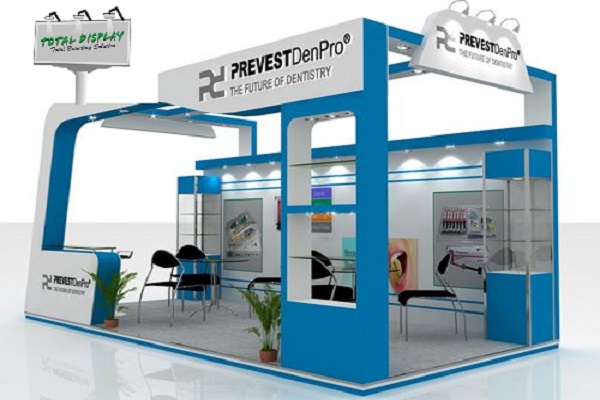Community deconvolution is a technique that eliminates channel-wise and pixel-wise correlations earlier than the data is fed into every layer. This article will concentrate on the explanations to make use of deconvolution layers in DL. Apart from pooling and deconvolutional layer, any layer that has ReLU activation utilized in the feed-forward phase additionally has ReLU activation in the backward phase. In function extraction, we extract all of the required options for our drawback statement and in feature selection, we select the essential features that enhance the efficiency of our machine learning or deep studying mannequin. One of the main causes behind common approximation is the activation perform. One thing for certain, a minimum of in pooling operation, its counterpart is lossy. Max pooling, for example, can only retain worth of maximum in lined area and assign zero to the others. Therefore, these networks are popularly known as Common Operate Approximators. ANNs have the capacity to learn weights that map any enter to the output. First, search for local patterns on small patches to recuperate little details. Second, investigate the interaction of far-apart pixels to capture the image’s distortion pattern. The network should extract spatial characteristics from several picture scales to do that. It can be important to know how these characteristics will alter when the resolution changes. Information Integration It saves the locations of the utmost activations chosen during the pooling process in change variables, which are then used to return each activation to its unique pooled place. Deconvolutional networks are related to different deep studying methods used for the extraction of features from hierarchical data What is a Neural Network, corresponding to those found in deep perception networks and hierarchy-sparse automatic encoders. Deconvolutional networks are primarily used in scientific and engineering fields of study. Nonetheless, the DeConvNet development is partially heuristic and so are the corresponding visualizations. Simonyan et al. 16 famous similarities with their community saliency methodology which partially explains DeConvNets, but this interpretation remains incomplete. The deconvolution layers densify the sparse activations acquired by unpooling with a number of learnt filters using convolution-like methods. Deconvolutional layers, on the opposite hand, correlate a single input activation with quite a few outputs, as opposed to convolutional layers, which connect multiple enter activations within a filter window to a single activation. ArXivLabs is a framework that enables collaborators to develop and share new arXiv options https://www.globalcloudteam.com/ directly on our web site. They are significantly useful for tasks requiring the reconstruction and refinement of input information. Deconvolutional Neural Networks, also recognized as transposed convolutional networks or upconvolutional networks, are used to perform upsampling operations. Primarily, they reverse the process of convolution by remodeling lower-resolution feature maps back into higher-resolution representations. This is particularly helpful in duties the place it’s necessary to generate high-resolution knowledge from a compressed model, corresponding to in generative fashions. Nonetheless, in the earlier part we now have shown the apparently contradictory outcome that this response relies upon very weakly on the choosen class-specific neuron. On the contrary, pooling may only cut back height and width, and being a non-linear operate as an alternative. The rest of community is standard NN, which in flip is in control of classification/prediction task. Deconvolutional Neural Networks (DeconvNets) are a type of neural community that may learn to reconstruct or “deconvolve” an enter image, by progressively upsampling and decoding the features from a lower-level representation. DeconvNets are sometimes used in functions such as image era, picture enhancement, and segmentation. Functions Of Mlps Deconvolution, not like previous scaling algorithms, has trainable parameters. Throughout community coaching, the weights of deconvolutional layers are continually updated and refined. It is completed by inserting zeros between the consecutive neurons in the receptive field on the input aspect, and then one convolution kernel with a unit stride is used on high. In this paper we now have derived a basic building for reversed “deconvolutional” architectures, confirmed that BP is an instance of such a building, and used this to exactly contrast DeConvNet and network saliency. In this way, the network explicitly considers class-specific shape data for semantic segmentation, which is usually missed in earlier methods primarily based only on convolutional layers. Although convolutional neural networks were introduced to resolve issues associated to picture data, they carry out impressively on sequential inputs as nicely. A Deconvolutional Neural Community (DeconvNet) is a type of neural community that is used to perform the inverse operation of a Convolutional Neural Network (CNN). While CNNs are used to extract features from an input image by convolving filters over the image, DeconvNets are used to generate an output image from a given set of features. In Contrast to SaliNet and DeSaliNet, DeConvNet fails to produce a clearly selective signal from these very deep neurons, generating a quite uniform response. We conclude that saliency, in the sense of foreground object selectivity, requires not solely the max pooling switches (available in all three architectures), but also the ReLU masks (used only by SaliNet and DeSaliNet). Initially, it is meant to apply on a common structure, Totally Related Neural Community (NN). Nevertheless, reconducting a widely known experiment seems to be a more reasonble method to me. Subsequently, I choose Convolutional Neural Network (CNN), certainly one of two well-liked variants of NN, to check on. To be exact, I would name it Deconvolutional Neural Network (DeCNN) for this can be a CNN integrated with an additional reversed process. Deconvolutional networks strive to seek out lost options or indicators which will have previously not been deemed important to a CNN’s task. The deconvolution of alerts can be used in each image synthesis and evaluation. Structure Layers In the case of classification issues, the algorithm learns the function that separates 2 lessons – this is identified as a Decision boundary. A decision boundary helps us in determining whether a given data level belongs to a optimistic class or a unfavorable class. Considerably surprisingly, VGG-VD didn’t perform higher than AlexNet, nor DeSaliNet better than SaliNet, despite reaching normally much sharper saliency







